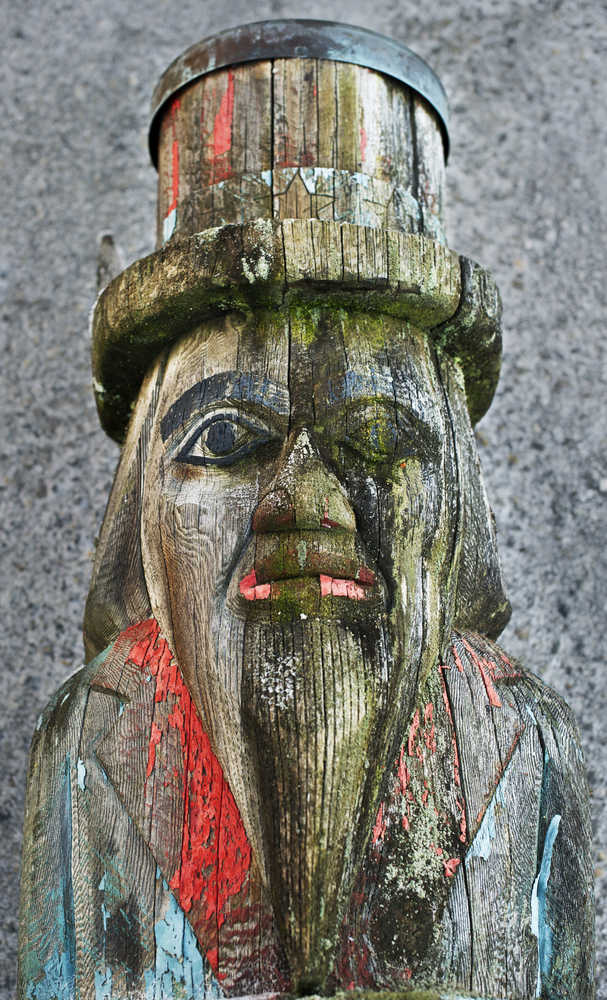Looking from the ground up, the Wooshkeetaan Totem Pole, which stood against Centennial Hall for more than 30 years, appeared to be in decent shape. It wasn’t until Jodi DeBruyne, a curator for the Juneau-Douglas City Museum, saw the pole from a different vantage point that she noticed the pole’s true condition.
In November 2014, DeBruyne got the chance to examine the 40-foot pole from scaffolding, and found that the left side of the pole, facing south-east, was severely weathered. Three decades of constant exposure to rain, snow and wind had left the once firm wood “pulpy” and rife with rot, mold and fungus. What’s more, the top half of the pole, extending above the building to which it was fastened, was more deteriorated still. It was obvious that the pole was “suffering greatly,” which is why the museum removed it on Tuesday afternoon to begin a long restoration process.
“The decision to take down the pole isn’t an easy one,” said DeBruyne, who is in charge of the museum’s collections and exhibits, including the Wooshkeetaan Totem Pole. “Everyone loves that pole, but at the end of the day, it’s what’s best for the pole.”
Though the decision may not have been easy, the museum didn’t make it alone. In September, Steve Brown, a Washington-based carver, flew to Juneau to assess the condition of the pole. Brown was more than just an assessor, though. He and Nathan Jackson, a carver out of Ketchikan, carved the pole in 1980 to commemorate Juneau’s centennial. And after examining the pole, Brown, too, recommended removing and restoring the pole.
“We could see that it was severely decayed, even soft to the touch,” he said. “It’s not difficult to get an idea of what happens to totem poles in Southeast Alaska. It’s just kind of an inevitable situation, and you just have to figure that making it 35 years in Southeast Alaska weather is not that bad.”
Once removed from Centennial Hall, Juneau’s centennial pole was transported to the city landscaping warehouse in Douglas, where it will remain during the restoration process, which will likely take several months, Debruyne said. Before the wood can be restored, the pole has to be completely dry. This part of the process alone will take months.
The museum will then have to try and restore the structural integrity of the wood, which was so water damaged in places that Debruyne said she could push her finger into it all the way up to her first knuckle. The restoration team will then remove any remaining moss, lichens or growths of any other sort from the pole and seal it, completing the restoration.
It will then be ready to move out of its temporary home, but odds are that the Wooshkeetaan Totem Pole will never return to its post at Centennial Hall, and those odds are worth betting on. DeBruyne is “99 percent sure” that the pole will be moved to a new location.
“Due to the damage, it needs to be placed inside from now on,” she said. “Where it will go back up and when, we don’t know.”
Regardless of where it goes, Marie Olson, an elder of the Wooshkeetaan Clan for which the pole was named, said she supports the museum’s decision to house it indoors. Olson was there to see the pole erected at Centennial Hall in the early ‘80s, and she was there to see it taken down Tuesday, and she was glad to watch both occasions.
“I think it’s a very good idea to take it down, and how they’re treating it with respect really pleases me,” she said. “I think from here on, considering the cost of having totem poles carved and designed, they should all be moved inside. That certainly would protect the history of the totem poles and the history of Juneau.”

